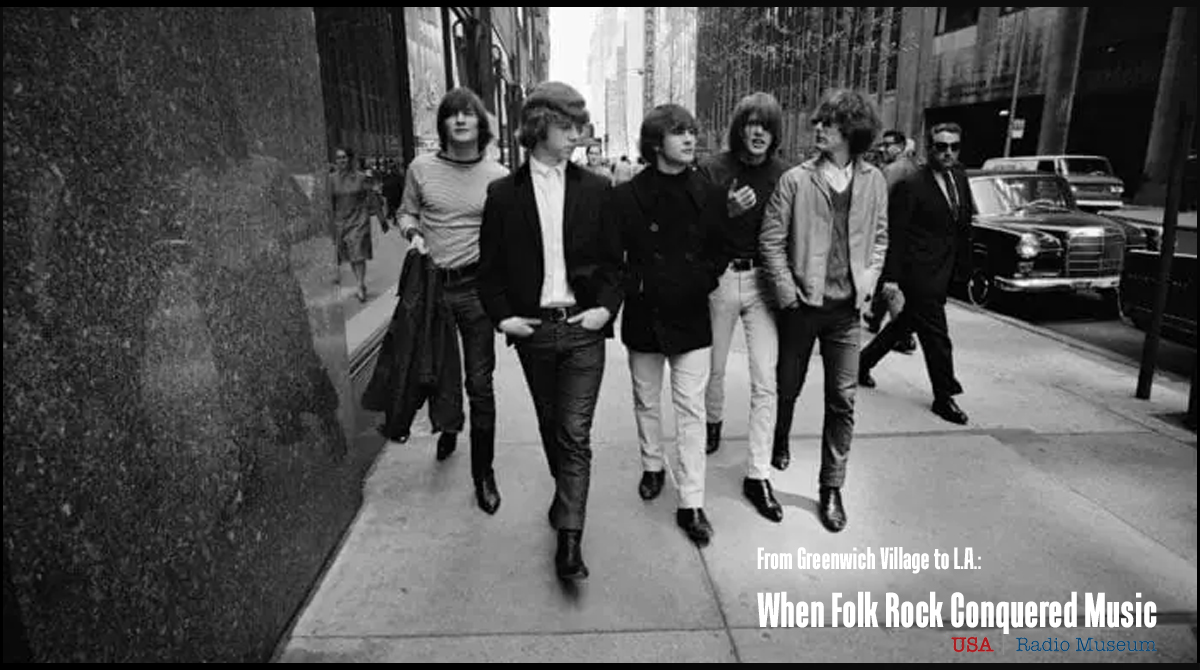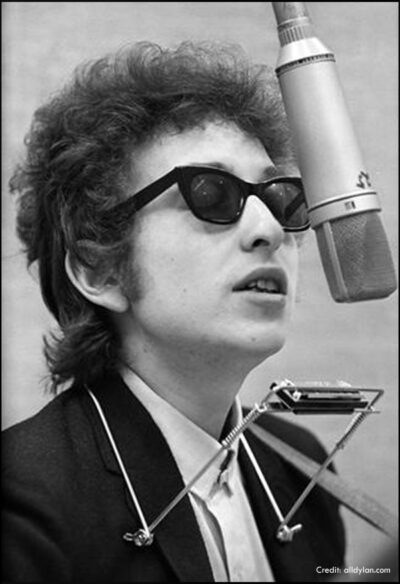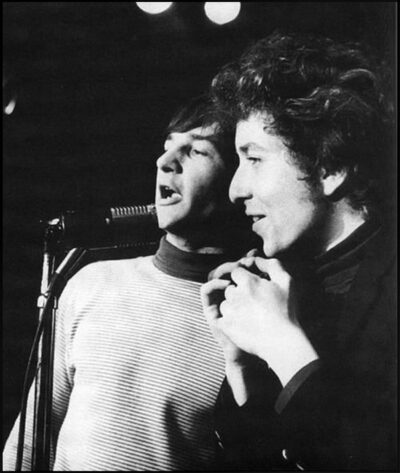Bob Dylan, The Byrds and The Folk Rock Revolution of the '60s Introduction: The Moment Folk Met Rock By 1965, the music world was underg
Bob Dylan, The Byrds and The Folk Rock Revolution of the ’60s
Introduction: The Moment Folk Met Rock
By 1965, the music world was undergoing a seismic shift. The folk scene had flourished through the early ’60s, championed by socially conscious acoustic troubadours like Bob Dylan, Joan Baez, and Peter, Paul & Mary. Yet, by mid-decade, the genre began evolving, absorbing the electrified energy of rock ‘n’ roll. This transformation—folk rock—created a new movement, blending poetic folk lyricism with dynamic rock instrumentation.
Two artists were at the epicenter of this revolution: Bob Dylan, the iconic voice of folk, who took an audacious leap into electric music, and The Byrds, a young band from Los Angeles that reinterpreted Dylan’s words into jangly, electrified melodies. Their combined influence helped launch one of the most defining musical movements of the 20th century.
Bob Dylan’s Electrified Leap
Bob Dylan had established himself as the leading folk songwriter by the early 1960s, penning powerful protest anthems like “Blowin’ in the Wind” and “The Times They Are A-Changin’.” However, Dylan was never one to stay in one musical lane for long.
In March 1965, Dylan released Bringing It All Back Home, marking the first signs of his electric transition. The album featured one side of acoustic songs, but the other half was electrified—complete with drums, electric guitar, and a newly defiant energy.
Yet, it was his July 25, 1965 performance at the Newport Folk Festival that sent shockwaves through the folk world. Dylan took the stage with an electric band, playing electrified versions of “Maggie’s Farm” and “Like a Rolling Stone.” Folk purists reacted with outrage—some booing, others stunned into silence. Yet, rock audiences embraced it, paving the way for a new sound.
Dylan continued his electric evolution with Highway 61 Revisited (August 1965), delivering his first fully electrified album, featuring the iconic “Like a Rolling Stone.” The bold, poetic masterpiece changed the scope of rock songwriting forever, proving lyrics could be just as powerful, abstract, and thought-provoking as the music.
The Byrds: Bringing Folk Rock to the Masses
While Dylan was electrifying folk, a Los Angeles-based band called The Byrds was busy translating his vision into a sound that would bring folk rock to mainstream audiences. Formed in 1964, The Byrds consisted of Roger McGuinn, David Crosby, Gene Clark, Chris Hillman, and Michael Clarke. Inspired by Dylan’s lyricism and The Beatles’ electric energy, they set out to merge folk storytelling with rock instrumentation.
Their breakthrough came in June 1965 with their electrified cover of Bob Dylan’s “Mr. Tambourine Man.” Their jangly 12-string Rickenbacker guitar, tight harmonies, and pop-influenced rock arrangements made the song a massive hit, reaching #1 on the Billboard Hot 100.
Following the success of Mr. Tambourine Man, The Byrds released Turn! Turn! Turn! (December 1965), continuing to blend folk sensibilities with electric instrumentation, reinforcing folk rock’s rising influence.
The Dylan Cover Explosion
By late 1965, Bob Dylan’s songwriting dominated the music scene. A Billboard article on September 4, 1965, revealed that 48 different Dylan songs had either been released or were in production, illustrating his massive cultural impact.
Some of the most notable Dylan covers included:
- The Byrds – “Mr. Tambourine Man”
- The Turtles – “It Ain’t Me Babe” (debut single, Top 10 hit)
- Cher – “All I Really Want to Do” (adding pop elements to Dylan’s folk)
- Barry McGuire – “She Belongs to Me”
- Simon & Garfunkel – “The Sound of Silence” (remixed into folk rock late 1965)
- Johnny Cash & June Carter – “It Ain’t Me Babe” (giving Dylan’s song a country twist)
Dylan had become the most covered songwriter in contemporary music, proving that his words transcended genre boundaries.
Other Folk Rock Influences in 1965
Beyond Dylan and The Byrds, other artists were shaping folk rock’s growing presence in popular culture.
- Simon & Garfunkel: Initially acoustic folk artists, their remixed folk rock version of “The Sound of Silence” soared to #1 by early 1966.
- Barry McGuire: His gritty protest anthem “Eve of Destruction” captured the era’s political unrest.
- The Lovin’ Spoonful: Fusing folk lyrics with pop rock arrangements, their hit “Do You Believe in Magic” (1965) helped broaden the genre.
- Trini Lopez & The Serendipity Singers: Both infused folk rock with their unique performance styles, blending Latin, harmony-driven sounds, and pop elements.
These artists helped propel folk rock into mainstream consciousness, making it a dominant force in popular music by the end of 1965.
Joan Baez: A Bridge Between Folk and Rock
Unlike Dylan and The Byrds, who fully embraced electrification, Joan Baez straddled the line between traditional folk and the emerging folk rock movement.
As one of the earliest champions of Bob Dylan, Baez had spent the early 1960s showcasing his songs at folk festivals, helping introduce his songwriting genius to new audiences. By 1965, she subtly incorporated elements of folk rock into her music, such as on her album Farewell, Angelina, which contained traces of electric instrumentation.
Her BBC performances in 1965, featuring Dylan compositions, also displayed her willingness to modernize folk while keeping its soulful essence intact.
Baez’s approach was gentle but impactful—she didn’t fully electrify her sound but helped transition folk artists into the new era.
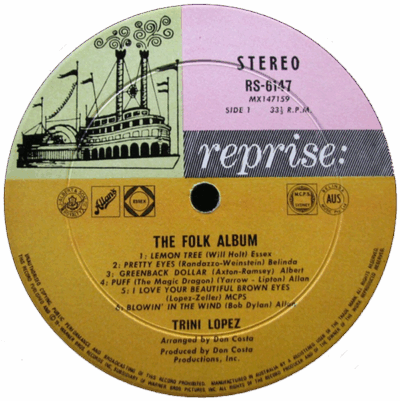 Trini Lopez: Latin Energy Meets Folk Rock
Trini Lopez: Latin Energy Meets Folk Rock
Trini Lopez brought a unique Latin twist to the folk rock movement. While originally known for his 1963 hit “If I Had a Hammer,” by 1965, he had embraced the folk rock wave with The Folk Album, covering classics like Bob Dylan’s “Blowin’ in the Wind.” His ability to blend folk storytelling with upbeat rhythms made him a vital bridge between traditional folk and contemporary rock.
- His electrified arrangements helped broaden folk rock’s appeal.
- His charismatic, high-energy performances made folk songs radio-friendly.
- His work influenced later artists who mixed folk rock with Latin and pop elements.
The Serendipity Singers: Folk Revival to Folk Rock
The Serendipity Singers, originally formed in Boulder, Colorado, had a choral folk sound, reminiscent of groups like The New Christy Minstrels. Though their biggest hit, “Don’t Let the Rain Come Down,” leaned toward traditional folk, by 1965, they experimented with folk rock instrumentation to remain relevant.
- They kept rich harmonies but added electric backing.
- They modernized folk by blending traditional themes with radio-friendly arrangements.
- Their transition helped folk rock appeal to a wider audience, influencing groups like Spanky and Our Gang.
Their Collective Impact on Folk Rock
Joan Baez, Trini Lopez, and The Serendipity Singers played key roles in bridging traditional folk and rock, proving that folk songs could be dynamic and commercially successful. Their adaptations paved the way for artists like Simon & Garfunkel, The Mamas & The Papas, and Peter, Paul & Mary to embrace folk rock’s electrified sound.
The Folk Rock Legacy
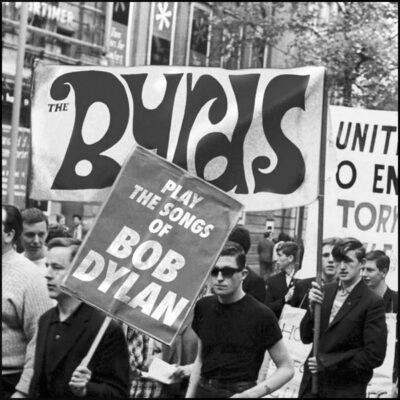 By the close of 1965, folk rock had evolved from a musical experiment into a full-fledged movement. Bob Dylan’s fearless leap into electrification changed the course of rock songwriting, while The Byrds introduced folk rock’s radio-friendly appeal to a mass audience.
By the close of 1965, folk rock had evolved from a musical experiment into a full-fledged movement. Bob Dylan’s fearless leap into electrification changed the course of rock songwriting, while The Byrds introduced folk rock’s radio-friendly appeal to a mass audience.
Folk rock’s influence didn’t end in 1965—it continued to shape music for decades. The genre’s impact can be heard in:
- R.E.M. and Tom Petty, who embraced jangly folk rock tones.
- Wilco and Fleet Foxes, keeping folk rock storytelling alive in modern indie music.
- The Lumineers and Mumford & Sons, carrying folk rock’s spirit into the 21st century.
What Dylan and The Byrds ignited in 1965 wasn’t just a trend—it was a musical revolution. One that forever altered the way songs were written, recorded, performed, and was received.
Yes, in 1965, folk music had truly become electrifying—both literally with amplified instrumentation, and culturally, as it dominated radio airplay, record charts, and just the same, the youth movement in the U.S.. What started as a grassroots acoustic storytelling tradition evolved into a mainstream, electrified phenomenon, thanks to aspiring visionaries like Bob Dylan and The Byrds.
_____________________
A USARM Viewing Tip: On your mobile or tablet device? Finger-tap the above images (in the post) and stretch image across your device’s screen for LARGEST digitized view.

